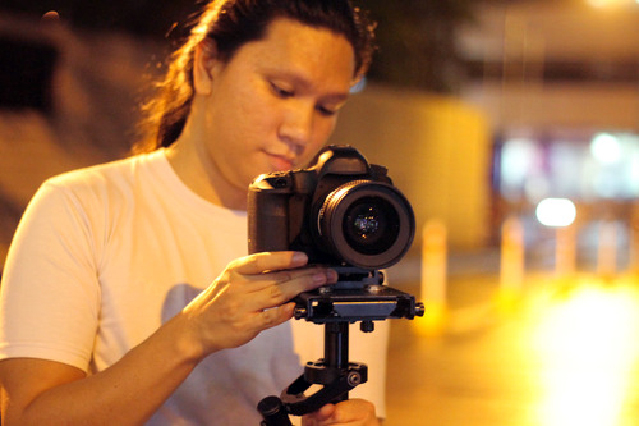
By KATHLEEN TARA OCHOA
IT is the 74th annual Hunger Games. At District 12, there stands Effie Trinket with her long pink eyelashes as she picks the tributes.
But in a sea of people in white, a voice was heard saying, “I volunteer as tribute!” It was Katniss Everdeen, a girl in a blue dress, who now becomes the female tribute while Peeta Mellark was picked as the male tribute.
Preparations such as makeovers and trainings are made for the tributes as the days draw nearer to the Hunger Games—a literal one as it is an eating contest.
The couple in the video wants it to be a spoof since they love to eat. Now that’s what you call a wedding teaser.
Sequence by Sequence, a five-member video production team, made this possible.
Rafael Aggarao, or Aji to his family and friends, started Sequence by Sequence in 2010 when he bought his first camera that shoots professional quality videos. He decided to quit his internship and work with his friends, Jasmin de Guzman, Jon de Chavez, Miko Dilao and Joash Maramara.

Since they were new to the industry, his team struggled financially. “How would we provide quality (videos) with the few equipment we have?” Aggarao said. The accessories and equipment needed for a video production, even the littlest ones, can be quite expensive.
Despite the annoying costs, Aggarao and his team knew they needed to invest their earnings in the equipment. “Right now, I think we got the equipment we needed, but we need a little bit more for optimum quality,” he said.
The other challenge was how to stand out in a sea of video production teams.
“When you are starting out, what happens is that you have to follow the industry leaders,” Aggarao, an advertising graduate said. Since clients want the same style done by industry leaders, most videographers try to do this at a lower price.
But the 26-year-old Aggarao sees it as a problem: “How can you differentiate yourself if all of you are doing the same thing?”
So Sequence by Sequence decided to deconstruct the style of majority and create one that is distinctly its own.
Its first project was courtesy of Aggarao’s mom who told her friends about his company. It was a teaser for her mom’s high school reunion. “You know how parents are, they are very supportive and they tend to exaggerate things,” he said with a grin.
During its first wedding coverage, Aggarao recalled that his team had no idea of how to strategically shoot a wedding. The outcome wasn’t bad, but looking back, he said there were things he and his colleagues wouldn’t do again.
The biggest challenge for weddings is positioning cameras in a one-take environment. Said Aggarao: “You can’t say to the couple, ‘Can you do it again? I wasn’t able to shoot it.’”
He said clients nowadays also want a same-day edit—a three- to five-minute music video to be edited within the day and shown at the end of the reception.
Unlike weddings, corporate shoots are more structured, and there is such thing as take two. A firm believer in the saying that time is money, Sequence by Sequence tries as much as possible to plan everything, from the first to the last shot, to ensure less cost and less work come production day and postproduction.
Aggarao and his team treat their videos with utmost respect as their clients see them as an investment. The couple that did the Hunger Games teaser didn’t have plans on having one. But when they saw the work of Sequence by Sequence, they thought that it would be nice to show their future children how cool and fun they are.
“That’s when we realized that we have to make every single work a special one since we never know who might see it,” Aggarao said.
A self-confessed geek when it comes to anything video-related, he shares two of his most unforgettable shoots. The first was a wedding in Tagaytay where he found himself teary-eyed as he covered the vows of the groom and bride.
The second one, which he remembered the last minute, was seeing their work on the big screen. They made four commercials for Watsons, a health and beauty store.
“When you’re starting out, you’d think of what it’s like for your work to be shown in the cinema. We never thought we would experience it,” he said.
In the coming years, Aggarao and his team plan to cover fewer weddings to make each project more special and do corporate shoots in between. That’s because they want to have more time to do passion projects—or those they do for free.
“With the passion project we’re able to explore and do what we really want. And if there’s no money involved and you still exert effort, then you’d know that you really love what you do,” Aggarao said.
(The writer is a Communication Research student at the University of the Philippines-Diliman who submitted this story to her Journ 101—Introduction to Journalism—class under VERA Files trustee Yvonne T. Chua.)
